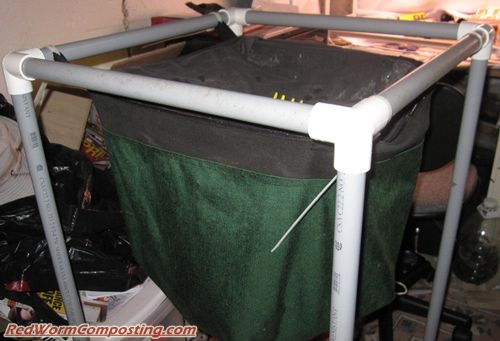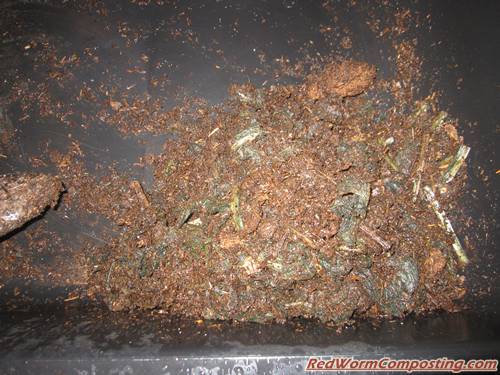In my last update I mentioned my plans to get “creative” with my choice of Worm Inn “food” materials since my own supply of food scraps just hasn’t been enough for all my various systems.
Given the time of year – and specifically the fact that I have heaps of green “wastes” in the form of pulled weeds, grass clippings etc – I thought it might be fun to test out some materials I wouldn’t normally recommend for a typical worm bin.
With that being said, I should quickly offer a warning so everyone doesn’t run off and start tossing grass clippings into their enclosed plastic vermicomposting systems!
NOTE: Please keep in mind that green wastes can release ammonia gas (toxic to worms in very small concentrations) and cause other issues like overheating in smaller, enclosed vermicomposting systems. They should only be used in well ventilated systems in which a high quality worm habitat has already been established.
For my first batch of green waste worm food I ended up harvesting a bunch of leaves from my giant comfrey plant (growing in front of one of my backyard composters). As I’ve written previously, comfrey is a great plant to grow and add to your compost since it is a nutrient accumulator. It’s also a fairly nice green waste to work with since the leaves can be rendered “worm-friendly” fairly easily (since not super tough and fibrous like some other “weeds”). All I did was toss them in a bag and put them in the chest freezer overnight before letting them thaw out.
As you can see below, this alone really softened them up.
I next cut them up with some heavy duty scissors and mixed them with some “living material” (really well-aged horse manure in this case) before adding them to the Inn.
I added this mix a couple of days ago, and when I checked on it yesterday there already seemed to be lots of worms and springtails chowing down on it. I think it’s safe to say that it’s a pretty well-received “food”.
Next, I think I’ll try some of the weeds that I pull out of my garden. Again, the KEY here will be optimization of these materials. Freezing, chopping, and mixing with “living materials” will definitely make a huge difference!
8)




Hi Bentley – interesting work. Have you ever tried artichoke leaves from the plant or the remnants after you eaten them? My bins are too small right now for it and I was just wondering. My plant did tremendous this year with a little vericompost added to it at the beginning of the year. Harvested over 24 chokes to date, nearly a third more than I normally get! I’m a true poop believer!
Yeah,i love this one! My large flowthrus been eating weeds for a bit now.I can run them through my disposal setup.Or just put them in the bin.I don’t add the roots or seed.Worms will chow down.And a flowthru lets the gases out quite easily! I use grapeleaves,dandelion,dollar weeds,a grass related to bamboo,edible vines,and any other non toxic plant i can find.Layer manure on top.And it never makes it out the bottom of the flowthru! I call it “Weed revenge”.My castings i use on the yard actually came from weeds.So it makes the lawn thicker to choke out weeds. LOL!